History and Heritage
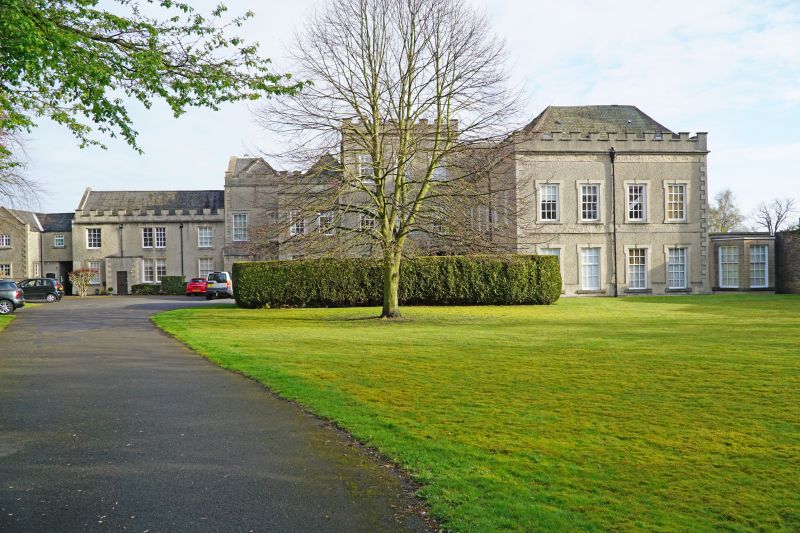

The Manor House
The Manor House at Mansfield Woodhouse was undoubtedly one of the largest and grandest houses in Mansfield Woodhouse and in its early days was the home of the Digby family.
It is a Grade II listed building of sprawling proportions and stands in lawned gardens on Priory Road.
One member of the Digbys, John, married Elizabeth Slaughter, nee Leche, in December 1589. Elizabeth was the daughter of Margaret, the half-sister of Bess of Hardwick (the Countess of Shrewsbury) and was one of the Countess’s most trusted and highest paid ladies-in-waiting at £30 per annum. She had a very close relationship with Bess and was privileged to be able to rely on the Countess’s own doctor when she was ill. When she had a baby in February 1592 she received £4 from Bess and Bess’s granddaughter, Arbella Stuart, gave the baby £2. John was also in service to Bess as a gentleman servant. Both she and John left Bess of Hardwick’s household in March 1595 but by the Christmas of 1596 Elizabeth was back there and stayed in service until Bess died in February 1608. The two ladies-in-waiting, Elizabeth and Mary Cartwright, had taken it in turns to nurse their mistress day and night to the end.
When James Cartland, the nephew of author Barbara Cartland, lived at Carnfield Hall, South Normanton, he kindly donated to the Old Mansfield Woodhouse Society a copy of an indenture dated 1592 showing all the goods and chattels of John Digby of Mansfield Woodhouse, the father of Sir John Digby. The connection being that Simon Digby (Sir John’s son) married Ann Revill whose brother Francis inherited Carnfield Hall in the 17th century.
Lady Chapel
Sir John Digby was born in January 1603. He and his wife Lucy, nee Triggott, were married on 13th September 1624 at Mansfield and lived at the Manor House with their family. Sir John was a royalist general and High Sheriff of Nottinghamshire and was knighted in 1642 for his part in securing Newark for King Charles 1 in the English Civil War.
Also in the 1640s George Fox, the founder of the Quakers, went to the steeple-house at Mansfield Woodhouse to declare the truth of his beliefs to the people there. In his journal he wrote how he was beaten and placed in the stocks. After some time he was taken to a magistrate at a knight’s house nearby. May I suggest that the knight would be Sir John Digby and the house, the Manor House.
Sir John and his wife died within months of each other in 1684 and life-size memorial statues of them both and their coat of arms are located in the Lady Chapel of St Edmund’s Church, next door.
Eventually with no male heirs to inherit the estate, the Manor House and lands were sold in 1736 to John Hall of Park Hall.
The Need family held occupancy at the Manor House for what seemed most of the 19th century. A short reference in White’s Directory of 1832 shows that ‘Colonel Need has a neat house in the village’.
The 1841 Census shows John Need, aged 80, of independent means and his wife Mary, aged 60, residing there with six servants. Ten years on and by 1851, Mary was a widow and her son Walter Need, aged 40 and single, a commander in the Royal Navy was living there as well her son-in-law Robert Gill, aged 50, chairman of the Lancashire and Yorkshire Railway, a title adopted by the Manchester & Leeds Railway in 1847 and his wife, Fanny, and their two children and seven servants.
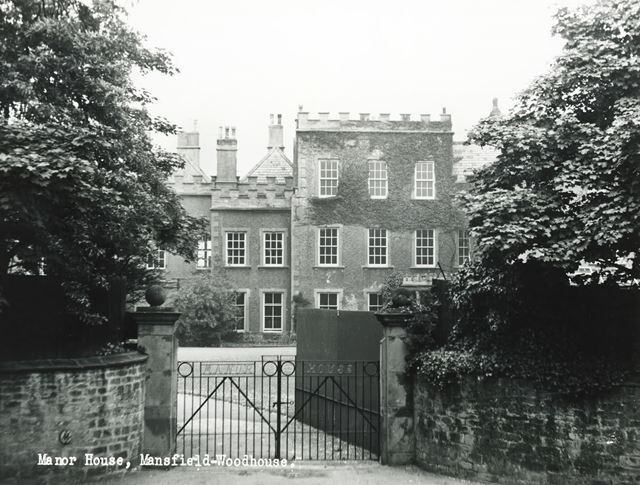


Woodhouse Castle
For many years the Manor House was called ‘Woodhouse Castle’ because of its castellated rooftops and Castle Street is so named after the house.
The house was actually home to two families at some points for it appears that Thomas Bilbie (75) a former major in the Derby and Notts Militia, and his wife, Mary Anne (65), and their six servants also lived there in 1851. She was widowed by 1861 but continued to live there.
Also by 1861 Walter Need, semi-retired and on half pay from the Royal Navy, had married an Irish girl, Emily McMahon (29) and together through the ensuing years they brought up their growing family of son Walter and daughters Emily, Rachel and Ethel.
He had retired fully by the time the 1871 Census was recorded but aged 61 continued his work as a county magistrate.
Further evidence that the Manor House was split into two residences comes from the 1871 and 1881 Census Returns. Caroline Bentley Buckle, a widow from Mansfield, together with her daughter, Caroline, and Army officer son, Arthur, a 2nd Lieutenant with the 76th Regiment and on the active list was recorded as living there.
Captain Walter Need, Royal Navy
It was a sad day in April 1901 when the news broke that Captain Walter Need had died at The Castle, aged 92.
He was buried in Blidworth Church Yard near to many other members of his family. Born in 1809 he began his career as a midshipman on the West Indian Station and he visited many distant parts of the world.
For several years he was a member of the Mansfield Board of Guardians, responsible for the administration of the Workhouse, and also a JP. His last appearance on the bench was in about 1895. He also held the office of churchwarden at St Edmund’s Church both under the Reverend W J Williams and the Reverend C Webb.
Mrs Need (widow of Capt Walter Need) was given a silver trowel with which to lay the foundation stone of the Parish Room of the Turner Memorial Hall on Church Street on 18th May 1907.
Captain Walter Need’s daughter, Emily, was responsible for restoring the vellum bound marriage registers of St Edmund’s Church which date from 1657 to 1836.
When Woodhouse resident Harriett Hargreaves was interviewed for her 100th birthday in 1999, she explained how eager she used to be to finish Sunday worship at St Edmund’s Church so she could watch the hunt leave from the Manor House next door to the church.
The managing director of Sherwood Colliery, John Archibald Taylor, and his family were living at the Manor House by late 1911. There is an entry in Betts’ Ledger (High Street ironmongers) that year for laundry goods purchased for Taylor at the Castle. His daughter, Betty Cartwright Taylor, more than 70 years later wrote to tell us that an Elizabeth I shilling had been found under the floorboards during renovations there when she was a child. Also a piscina, a stone basin, used for draining water at Mass in pre-Reformation times was found in the grounds of the Manor House and duly returned to the church adjacent. Also in the grounds were a tennis court and a walled kitchen garden. The tennis courts have been replaced by a residential development on Old Manor Road and the kitchen garden is now the location of the Stepping Stones complex of flats. Mr Taylor, who died in 1932, and his family were the last people to reside at the Manor House, for in 1933 the building was sold for £1,500 to the Urban District Council to be used as council offices.
So, in May 1934 the Urban District Council met for the last time at its Station Street Chambers and held its first meeting at the Manor House in the June and Councillor T T Hudson took over from Councillor W H Carter as chairman.
When the council moved in the tunnels, which radiated from there to many of the large houses in the immediate vicinity, were sealed. BLocal residents would enter the council offices from the rear of the building to pay their rates etc.
Dignitaries and uniformed organisations would gather outside the Manor House before marching into church for the chairman’s annual Civic Services.
Even when Mansfield Borough Council and Mansfield Woodhouse Urban District Council amalgamated in 1974 to form Mansfield District Council its offices were still based there. But in the early 1980s it was vacated when the District Council’s new offices were built on Chesterfield Road South in Mansfield.

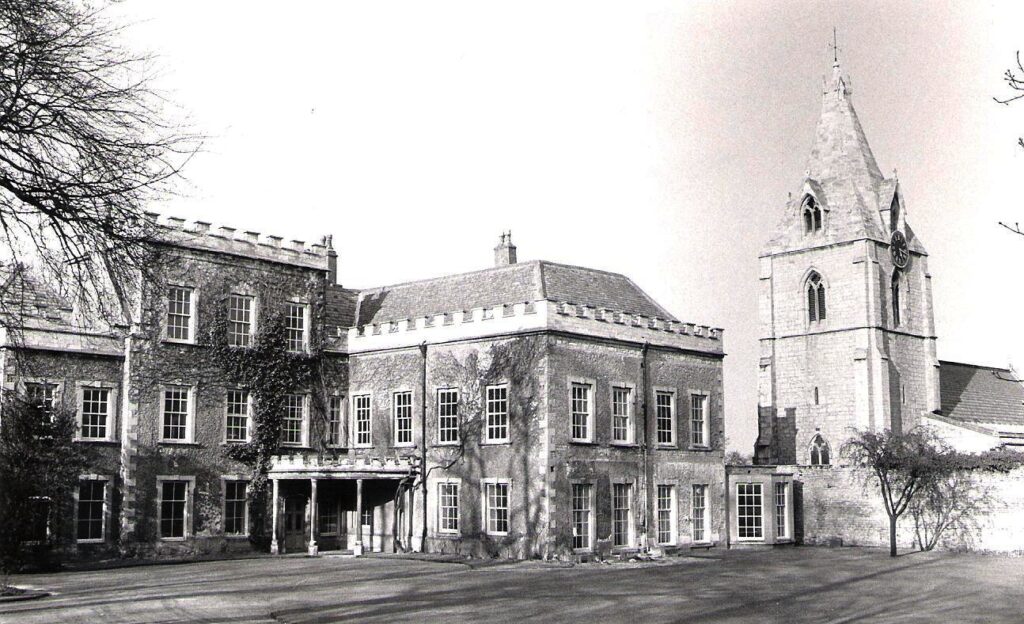

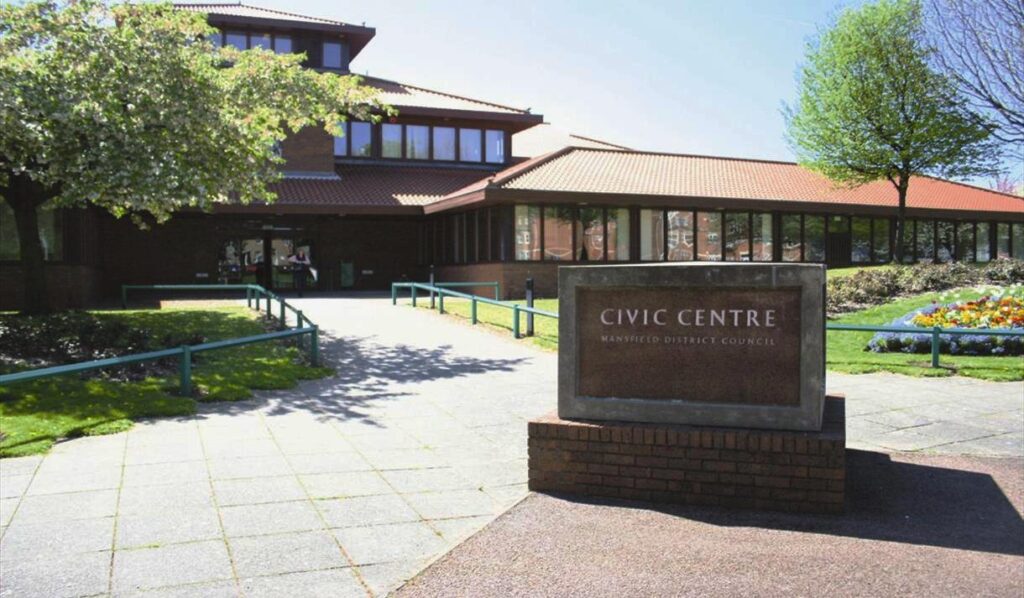
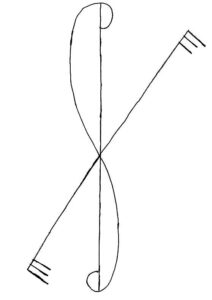
Survey
In February 1987, during the time when the Manor House was vacant, the Old Mansfield Woodhouse Society were privileged to have access to the building and took measurements of many of the 80 plus rooms on the ground floor and first and second floors. We also had access to the roof and took photographs of the surroundings from there. A room on the first floor was of particular interest for on the wall was a drawing. Over the years I have tried to decipher it but have not been successful. Perhaps it was someone’s initials or just ancient graffiti.
The Manor House was then sold to Charlesland Developers and by 1988 had been converted into a number of flats and apartments. During the conversion a Venetian window and the superb cantilevered staircase, dated c1690 and with fine carpentry and mahogany panels, were removed.
CREDITS AND SOURCES:
MANSFIELD REPORTER; MANSFIELD CHAD; CENSUS RETURNS; TRADE DIRECTORIES; MARGARET WOOLLEY, AUTHOR OF AN ARTICLE ENTITLED THE DIGBYS; ‘BESS OF HARDWICK,’ BY DAVID DURANT; JAMES CARTLAND FORMERLY OF CARNFIELD HALL; URBAN DISTRICT COUNCIL YEAR BOOKS; ‘HISTORY OF THE QUAKERS IN MANSFIELD’ BY RALPH HOLT; BETTY CARTWRIGHT TAYLOR; ST EDMUND’S CHURCH SURVEY.
